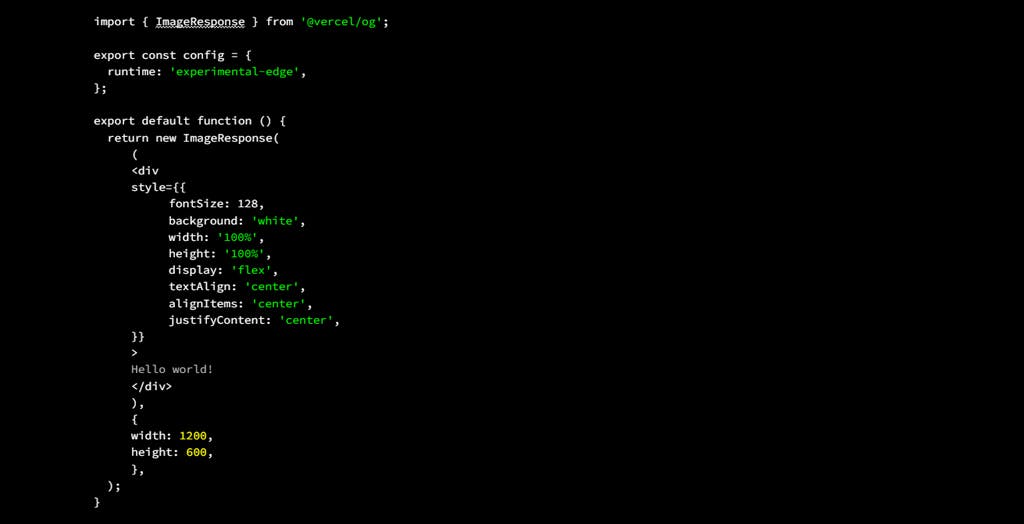Next.js 13: Get 40% Better Conversions Using Dynamic Social Cards
Introducing new Layouts, React Server Components, New App Directory, Turbopack, an improved Image Component, and the brand new Font Components
Table of contents
No headings in the article.
The goal of Next.js development is to create ambitious and complicated applications for teams. And, in order to accomplish this, Next.js began as a React framework for dynamically rendered sites.
There were restrictions to appreciating Next.js’s dynamic potential. Some restrictions made it difficult to maintain its effectiveness. Previously, using Next.js required the purchase of expensive, always-on infrastructure that required manual provisioning and lengthy operations.
These were the major arguments given by the Next.js team for releasing a version that was dynamic without limitations.
What makes Next.JS 13 limitless?
Three major categories of the Next.js 13 update include:
Compiler Infrastructure
Rendering Infrastructure
Component Toolkit
So let’s dig deeper into what each announcement entails.
1. Turbopack
Initially, it was evident that writing JavaScript tooling in JavaScript necessitated the use of tools like Babel, Terser, and WebPack. All of these tools struggled to keep up with the expanding size and complexity of front-end applications. The move to native rust-powered tooling was undertaken for this purpose. It began by moving away from Babel, resulting in 17 times faster transliteration.
Terser was then substituted, resulting in a six-fold increase in minification speed. Similarly, Webpack has become such an important element of developing the web that it needed to be reconditioned in order to build the web’s next-generation bundler.
Hence, the latest version of Next.js introduces a rust-based successor of WebPack named TurboPack.
TurboPack in Next.js 13 shows,
700 times faster updates than Webpack
10 times faster updates than Vite
4 times faster cold starts than Webpack
2. New App Directory
Another important component of Next.js is the file system-based router, which requires no configuration. Having served the feature to the largest web applications in the world it shares new opportunities to enhance it even more.
The new app directory supports other attributes like layouts, server components, streaming, and data fetching.

aceinfoway.com/blog/next-js-version-13-late..
3. Fresh Font System
Next.js 13 introduces a fresh font system with incredible properties.
Automatic optimization of fonts including custom fonts
Improved privacy and performance by removal of external network requests
Integral impromptu self-hosting for any font file
Zero layout shift automatically using the CSS size-adjust property

4. New Image Component
The new version made significant improvements to the image component in terms of performance and developer experience. This new image component was designed for web systems that are accessible via all major browsers.
Native lazy-loading
Better performance
Improved accessibility
Reduced size
Less usage of client-side JavaScripts
Maintains familiar interface
5. Dynamic Social Cards
Next.js 13 introduces a cost-effective and feature-rich solution for creating dynamic social cards. This forecast is five times faster than the current solution. It makes use of the Vercel edge functions, web assembly, and a sophisticated new core library to convert HTML and CSS into images, as well as React component abstraction.
@vercel/og will spontaneously add the correct headers to cached images at the edge, which helps in making this feature cost-effective.
The other features include:
Absolute positioning of basic CSS layouts
Customizing fonts, text wrapping, centering, and nested images
Compatibility with any Vercel deployed frameworks and applications

6. Middleware API updates
Middleware in Next.js 13 can now modify request headers, response headers, and send responses. It enables the execution of code before the completion of a request and can even affect the response by rewriting, redirecting, updating the request or response headers, or responding directly.
Take a look at how you can set request and response headers using NextResponse API,

Wrap up
Next.js 13 allows you to use tools that prioritize accessibility and efficiency, which is critical since it allows you to focus on ideation and experimentation within the project. By creating a quicker, more performant, and more accessible web, individuals will be able to operate as effortlessly and efficiently as they desire from wherever they are.
Detailed blog available here: aceinfoway.com/blog/next-js-version-13-late..

